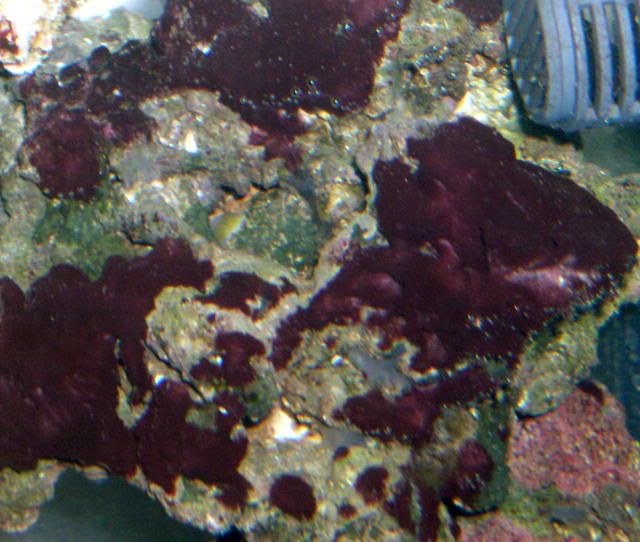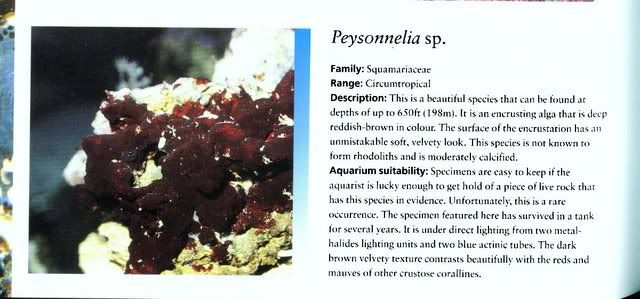alix2.0
Active Member
So I've had this algae for as long as I've had my tank - three years, and it only grows on one rock, a little on others, but nothing major. It is a deep purple color and builds up a thick, squishy mat. When I peel it up the underside is either brownish gray (and flakey) or bright green. It has a soft, velvety texture and is smooth with no bubbles (the ones in the picture are just stuck to it because it was by the skimmer outflow at that point,) or strands.
I currently don't have any in the tank as I just scrubbed the rocks to get rid of it, but it will probably be back soon. My parameters are good, ammonia, nitrite, and nitrate are all 0, calcium 460ish, SG 1.025, ph 8.2, and temp 80.
Is this cyanobacteria? And if not any ideas? It doesn't really bother me, and I used to think it was sort of pretty, but I've just decided to get it out of the tank because it makes the rock look kind of messy, and I want as little algae as possible so I can get more coralline growth.
thanks


I currently don't have any in the tank as I just scrubbed the rocks to get rid of it, but it will probably be back soon. My parameters are good, ammonia, nitrite, and nitrate are all 0, calcium 460ish, SG 1.025, ph 8.2, and temp 80.
Is this cyanobacteria? And if not any ideas? It doesn't really bother me, and I used to think it was sort of pretty, but I've just decided to get it out of the tank because it makes the rock look kind of messy, and I want as little algae as possible so I can get more coralline growth.
thanks




